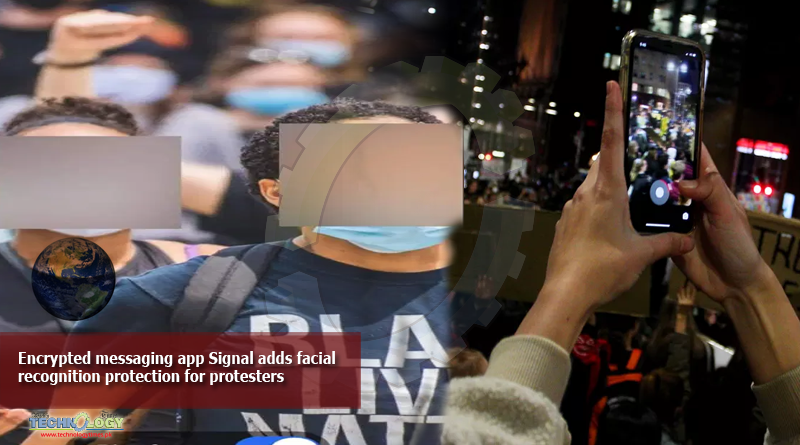Encrypted messaging app Signal unveiled a blur tool on Wednesday that can be used to hide faces in photos before sharing them. Signal said the tool aims to protect the identities of protesters currently demonstrating against police brutality.

While in the app’s image editor, users can tap on the new blur icon at the top of the screen and the tool will automatically detect and blur the faces in the picture. The tool also gives the option to manually blur out other areas of the image such as tattoos, logos, street signs and badges.
“These system libraries are not perfect. They don’t detect every face 100% of the time messaging app, and these flaws and potential biases meant that it was important to extend their default functionality so that you can always draw with the blur brush to manually obscure additional faces or areas in a photo,” Signal said in a blog post. “We’ve also been working to figure out additional ways we can support everyone in the street right now.”
SEE ALSO
- Geofence warrants: How police can use protesters’ phones against them
- DEA reportedly authorized to ‘conduct covert surveillance’ of George Floyd protests
Signal has seen a spike in downloads as demonstrations grow across the US following the killing of George Floyd on May 25. Since that day, the app has been downloaded 121,000 times in the US, according to Recode, citing data from Apptopia.
The blur tool could offer protesters some protection from facial recognition, which is increasingly being used by law enforcement even though it’s not always accurate, especially among ethnic groups, women and young people.
The face blurring tool will be added to the latest version of the Android and iOS app. Signal said the update has already been submitted to app stores and will be available soon.1COMMENTSecurityFacial RecognitionPrivacyMobileLarge play-pause toggleAndroid 11 beta coming June 3, a new…00:0001:44
Be respectful, keep it civil and stay on topic. We delete comments that violate our policy, which we encourage you to read. Discussion threads can be closed at any time at our discretion.
The feature pulls timestamps from a video’s description to create sections within a video.
YouTube hopes a new feature will make it easier for users to find specific parts of a video. Video Chapters, which launched Thursday on Android, iOS and desktop, uses timestamps from creators to break a video up into chapters, allowing users to jump to a particular section or rewatch a certain portion. The chapters show up at the bottom of the video player and pull timestamps from the video description.
Video Chapters is an optional feature. Creators can enable it by ensuring the first timestamp listed in the description starts at 0:00, and that there are at least three timestamps or chapters that are 10 seconds or longer each.
To disable the feature, change the first timestamp in the description to be something other than 0:00, such as 0:01.
Originally Publish at: https://www.cnet.com/
